Text
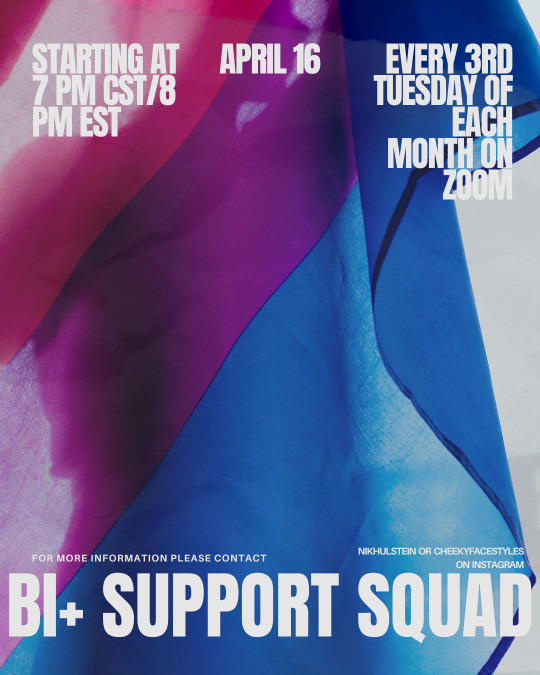
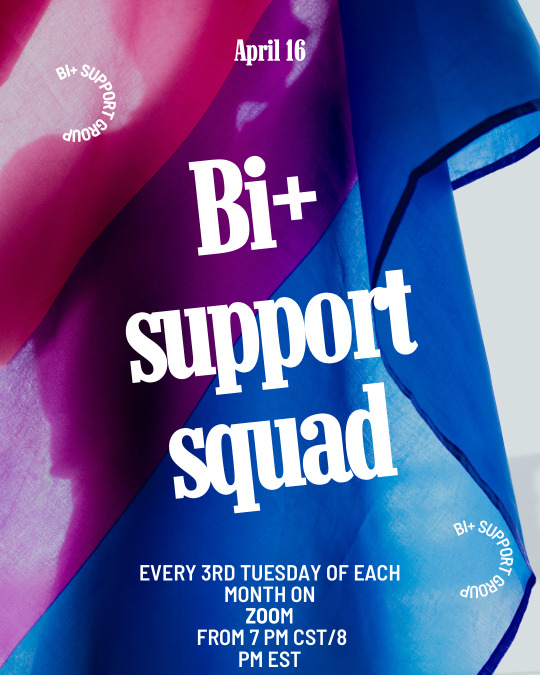
Calling all bi+ folks! Looking for connection & community? Our bi+ support group is here for you! We are a safe space to share experiences & find support also celebrate bi+ identities and journeys together. Zoom meetings every 3rd tuesday of each month. DM for more details!
#bisexuality#lgbtq community#lgbtq#bi#support bisexuality#pride#bi tumblr#bisexuality is valid#lgbtq pride#bi pride#bisexual#support bisexual people#support groups#queer#bisexual community#bi community#support bisexuals#bisexual nation#lgbt#bi+ community#bi+#lgbt community#zoom meeting#support group#online support#bi+ support
32 notes
·
View notes
Note
🩷💜💙
Aww thank you always happy to help make the world that much more bisexual 
5 notes
·
View notes
Text

The bisexual flag is a silent symphony of colors celebrating a powerful symbol of the beautiful complexity of loving across spectrums. To all my fellow bi folks: we are valid, we are loved, our love is beautiful, and our vibrant hearts are a gift to the world.
#bisexuality#lgbtq community#lgbtq#bi#support bisexuality#pride#bi tumblr#bisexuality is valid#lgbtq pride#bi pride#bisexual flag#bisexual#bisexual community#bi community#bisexual nation#queer nation#queer#queer history#bisexual people#bisexual men#bisexual women#my bisexual art#art#bisexual artwork#bisexual artist#powerful#lgbt#lgbt community
83 notes
·
View notes
Text
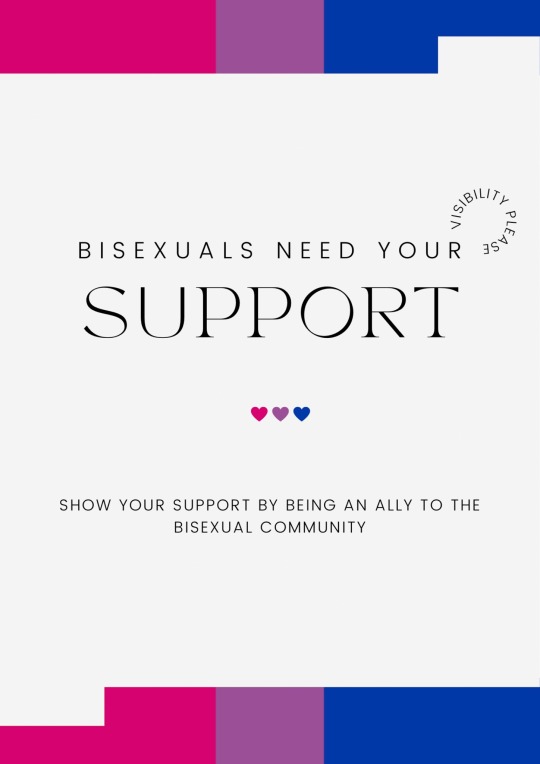
Designed by CheekyFaceStyles
#bisexuality#lgbtq community#lgbtq#bi#support bisexuality#pride#bi tumblr#bisexuality is valid#lgbtq pride#bi pride#support bisexual people#bisexual support#support bisexual#bi ally#bisexual allies#support#bisexual#bi nation#bisexual nation#bisexual women#bisexual men#bisexual people#bisexual community#bi community#ally#bisexual visibility
25 notes
·
View notes
Text

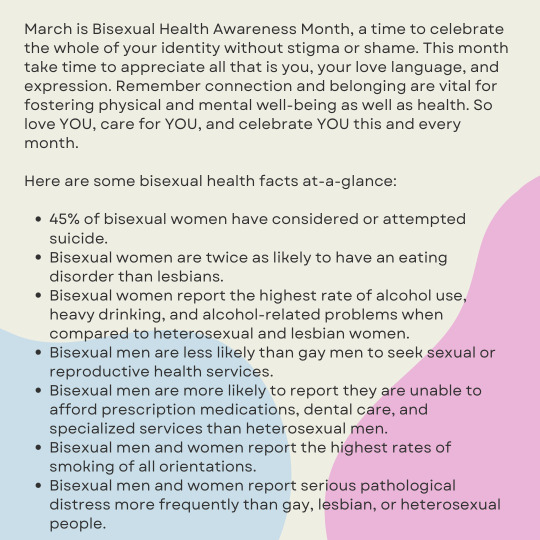

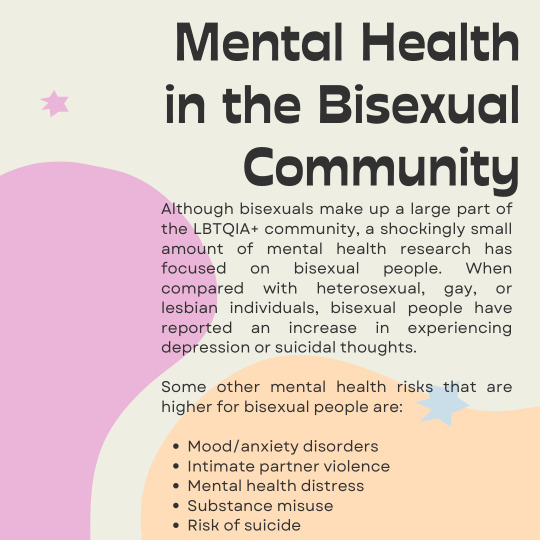

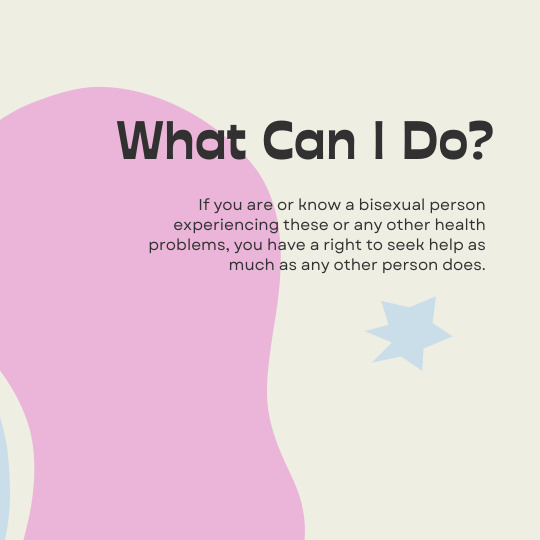
#bisexuality#lgbtq community#lgbtq#bi#support bisexuality#pride#bi tumblr#bisexuality is valid#lgbtq pride#bi pride#bisexual education#queer education#bisexual nation#bisexual#bi community#bisexual health awareness#bisexual health awareness month#bisexual community#bisexual mental health#mental heath support#support bisexual people#bisexual info#wellness#mental heath awareness#mental health tips#bisexual health#health awareness
19 notes
·
View notes
Text
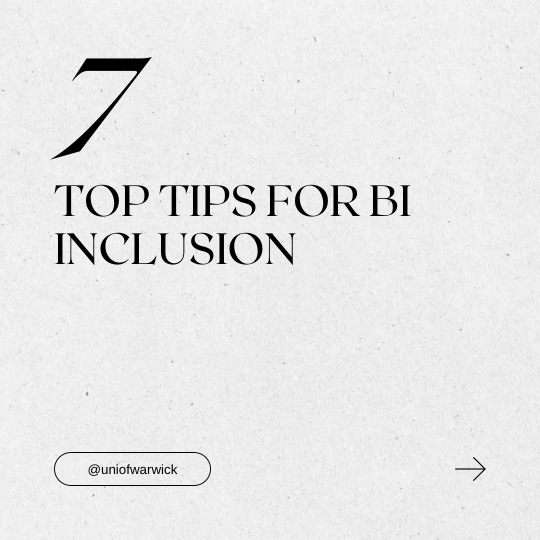
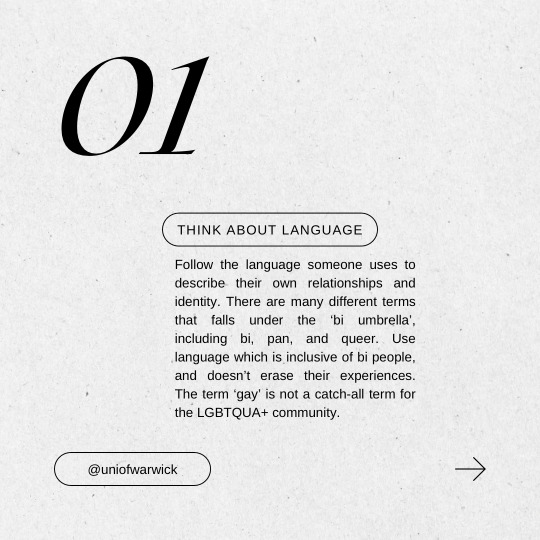


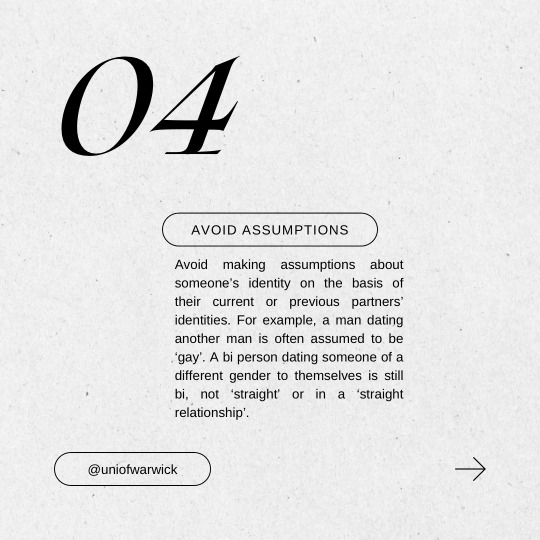
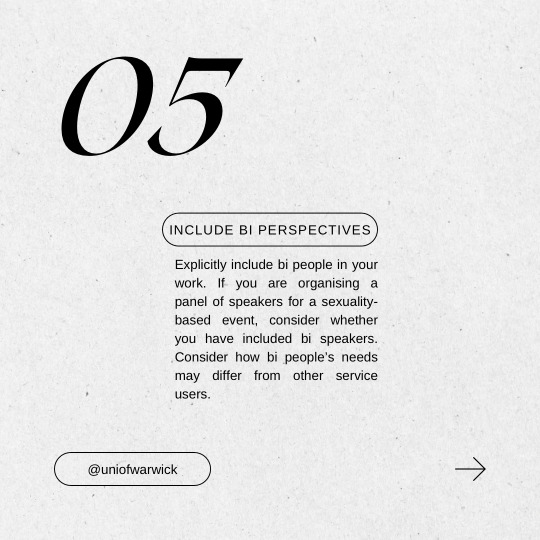
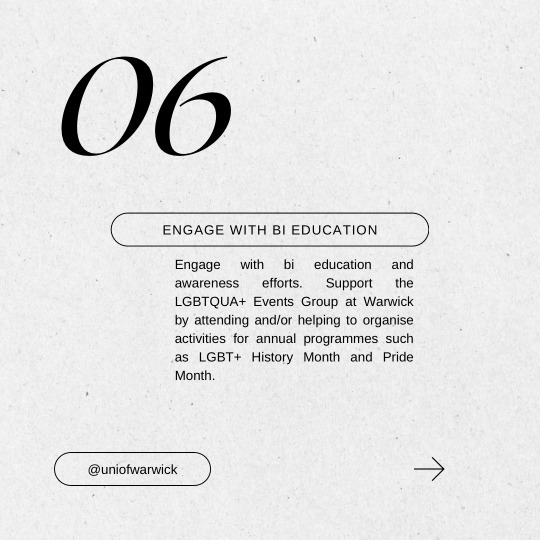
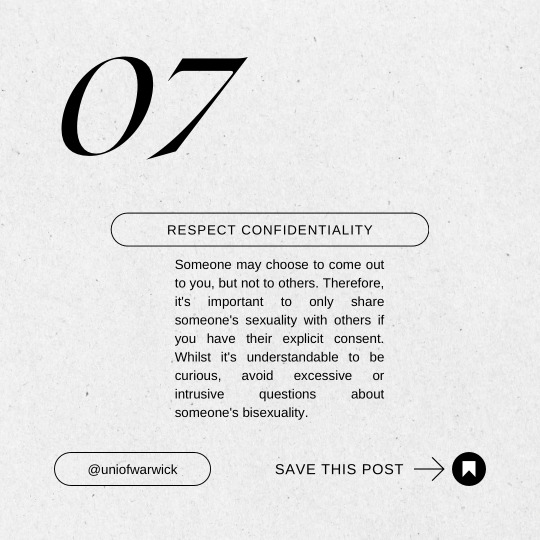
#bisexuality#lgbtq community#lgbtq#bi#support bisexuality#pride#bi tumblr#bisexuality is valid#lgbtq pride#bi pride#bisexual nation#bisexual#bisexual inclusion#inclusion#queer#bisexual education#bisexual health awareness#bisexual health awareness month#support bisexual#bisexual support#bi support#bisexual community#bi community#tips/info#bisexual tips#bisexual info
17 notes
·
View notes
Text

#bisexuality#lgbtq community#lgbtq#bi#support bisexuality#pride#bi tumblr#bisexuality is valid#lgbtq pride#bi pride#support bisexual men#support bisexual people#support bisexual#bisexual support#bisexual#bisexual community#bisexual info#bisexual facts#bi women#bisexual woman#bi men#bisexual men#bi people#bisexual people#bisexual nation#bisexual education#checklist#queer#queer education
38 notes
·
View notes
Text
Bisexual Basics
— Karin Baker
THE MOST BASIC thing about bisexuality is that it unlinks what most cultures see as a fundamental connection: sex and gender. If you can understand that for some people sexual attraction is not tied to a specific gender, then you understand the most important thing about bisexuality.
At least in the United States, separating sexuality and gender is difficult. While public attention—negative and positive—has recently been focused on homosexuality, the idea that it is not the only alternative to heterosexuality is less often recognized. This is not surprising, given that here as in most western cultures, there is a tendency to organize concepts dualistically, to see only opposites.
Heterosexuality and homosexuality as related ideas are one example. Thus, even while homosexuality is not an acceptable alternative to heterosexuality for many people, it is clearly fixed in their minds as the other option. Few conceive that there could be a third option, or even a continuum of possibilities.
This or That
Bisexuals sometimes refer to society’s tendency to dichotomize as an “either/or” approach. You must be attracted to either women or men, be either heterosexual or homosexual—what bisexuals sometimes lump together and call “monosexual.” Similarly, in our society, no matter what your actual racial background, you are seen as either white, or a person of color.
In contrast, some of us see bisexuals as having an approach to sexuality that could be called “both/and.” We are heterosexual and homosexual, both at the same time—which actually adds up to something completely different.
The woman whose parents are respectively white and African American is not racially or culturally half one and half the other. She is a blending of the two, in which neither aspect can be separated out. Similarly, bisexuals are not “part” queer, or “part” straight—we are what we are.
The Continuum of Sexuality
Maybe the idea that sexual attraction actually falls on a continuum, rather than clumping around homosexuality and heterosexuality, seems obvious. As a bisexual person, it is certainly obvious to me. However, I have come to realize that some are confounded by the idea.
This inability to imagine that someone could truly be attracted to more than one gender is probably the origin of myths such as “bisexuals don’t really exist,” and “bisexuals just haven’t made up their minds yet.” For some, sex means desire for women or men, but never both.
In a recent example, a bisexual friend of mine overheard a conversation between a lesbian and a gay man in which both commented on how confused bisexuals were. One of them said, “sooner or later bisexuals have to make up their minds!”
I wish I’d been there to ask them, why? Can you explain the basis for your reasoning? Why can’t we have already made up our minds—to be bisexual?
It seems to be hard to escape the assumption that there are only two choices, and everyone must ultimately settle for one of them. I have never heard a logical argument, or any biological law that explains why this choice is so unavoidable.
I have an easier time with this when I think about how hard it is for me to grasp attraction to one gender only, whether gay/lesbian or straight attraction. Because sexuality and gender aren’t linked for me, I’m surprised when I hear about people who are only attracted to women, or only attracted to men.
As a feminist I can understand why some women would choose not to be with men. I can also see that a person might want something in a sexual relationship that is more typically found with one gender or the other. But how could one gender always fall outside the boundaries of sexual possibility?
I believe that it happens, because people tell me that it’s true for them. It’s just extremely hard to imagine.
In fact, we bisexuals have a tendency (which I resist in myself) to think that all people are potentially bisexual. If they haven’t acted on it yet, monosexuals must either be repressed, or they just haven’t found the “right man”/“right woman” yet.
I suppose this is the bisexual equivalent of the monosexual perception that bisexuals are just going through a phase and haven’t made up our minds yet.
Gender in Bisexual Attraction
Although gender is not a limiting factor for bisexuals, it does sometimes play a role in bisexual attraction.
Some bisexuals that I know are attracted to women and men for gender-specific reasons. For instance, they like women because they see them as: easy to talk to, or nurturing, or soft and curvy; and they like men because they find them: straightforward, or more assertive, or hard and muscular (or some such gendered reasons).
So in this case, gender is part of the formula, but not a limiting factor.
Other bisexuals I have spoken with are also attracted to women and men differently, but they turn the previous specifications upside down. These bis say they find they like butch women and effeminate men. In a way this comes down to appreciating people to the extent that they escape genderedness.
But there are also many bis, such as myself, for whom gender has no place in the list of things that attract them to a person. For instance, I like people who are good listeners, who understand me and have interests similar to mine, and I am attracted to people with a little padding here and there, who have fair skin and dark hair (although I’m pretty flexible when it comes to looks).
“Male” or “female” are not anywhere to be found in the list of qualities I find attractive.
Monosexual Misconceptions
Bisexuals in the United States often experience hostility from lesbians and gay men, as in the incident described above. Lesbians and gay men, like heterosexuals, are often uncomfortable with breaking out of a dualistic way of looking at things.
Bisexuals blur boundaries thought to be fixed in stone, and this is disturbing.
Actually, bisexuals may appear to pose a more direct threat for lesbians and gay men than this general social disturbance. Lesbians and gay men who a in our society have almost always gone through a long process of leaving their family and heterosexual friends, as they leave the closet.
The community that rejected them is replaced by the one they join when they come out; the lesbian and gay community becomes their new family and friends, the place where they feel security and belonging.
Bisexuals who pop up in their new community blur its boundaries, making it feel less safe, less apart from the rejecting heterosexual community. Especially for those who believe that a bisexual has a fifty-fifty chance of finally choosing heterosexuality, a bisexual may well appear as the enemy within their midst.
Bisexuals often face misconceptions shared by lesbians, gay men, and heterosexual people. One of these is mentioned above: that bisexuals are confused people who havent made up their minds yet.
Undoubtedly some bisexuals are in a transitional phase between heterosexuality and homosexuality, but this is not necessarily so. And even when it is true, why should transition be seen as problematic?
Another common myth is that bisexuals are not committed to the struggle against queer oppression. Like many stereotypes, this may have some basis in reality. There are bisexuals who stay in the closet, who gravitate toward opposite gender relationships, marriage, and whatever else it takes to fit in.
Of course, many gay men and lesbians also never make it out of the closet. In fact, the lesbian and gay movement has always included bisexuals. Some have been openly bi, while others haven’t felt it worth the struggle to be open in the face of disapproval from the community that is so important to them.
Today, some bisexuals, like some gay men and lesbians, are not interested in getting involved in political struggle, but many others are very active within the queer community.
Another misconception is the idea that to be bisexual you must be sleeping with both women and men, and along with this, probably cheating on your partner. This is like saying that you cannot call yourself a lesbian (or gay, or straight) if you are single and celibate.
I believe that you’re bisexual (homosexual, heterosexual) if that’s what you call yourself. Your orientation stays the same, you still feel attraction, whatever your current actions.
Now it’s true, there are bisexuals who feel more fulfilled if they have relationships with a woman and a man. Some of these may have an agreement with their partner(s), and some not, but bisexuals are not the only sexual orientation where unorthodox relationships can be found, or where some cheat on their partners.
Bisexual Oppression?
A lesbian once told me that bisexuals experience oppression only to the extent that we “are homosexual.” She used this as an argument for leaving the name “bisexual” off titles of marches, community centers, newspapers, etc.
Who is included in group names has been a controversy for years (going back at least to the time when including the word “lesbian” was controversial because “gay” could supposedly count for both).
I don’t agree that bisexuals face only homosexual oppression. It’s true that when we are in same-sex relationships, one of the things we experience is heterosexism (and also, in our opposite sex relationships we do not as directly face the oppression gay men and lesbians face, although if we are openly bisexual we never completely escape heterosexism).
However, bisexuals confront forms of oppression that lesbians and gay men do not. Bisexual oppression includes compulsory monosexuality and the invisibility that is a result of monosexism. We are made invisible when people can’t conceive of sexual attraction that isn’t tied to one gender or the other, thereby denying our existence.
Even face to face, there is nothing about us that says we’re bisexual—if we’re with the same gender it’s assumed we’re lesbian/gay, and we must be straight if our partner is of the opposite gender.
Unless we happen to be holding hands and kissing a woman and a man simultaneously, an either/or way of seeing things means most people will automatically categorize us as either homosexual or heterosexual. This is monosexism at work.
In recent years some things have changed for bisexuals in the United States. We have started to find each other and form organizations and small communities. Conferences happen regularly in different parts of the country, and a national network exists.
Books about bisexuals multiply, as we tell our stories and develop theories about how we fit in. Much to the discomfort of some lesbians and gay men, we have been increasing the pressure to have our presence within the queer community acknowledged.
It seems inevitable that we will have an impact on how the people of this country view sexuality. Will this go further and affect the fundamental tendency toward dualistic categorizing, the either/or mindset?
#bisexuality#lgbtq community#lgbtq#bi#support bisexuality#pride#bi tumblr#bisexuality is valid#lgbtq pride#bi pride#bisexual#basics#bisexual education#bisexual nation#bisexual community#bi community#bisexual visibility#bi visibility#bisexual advocator#bisexual activism#bisexual activist#queer#queer nation#bi people#bi men#bisexual women#bi women#bisexual men#bisexual people
74 notes
·
View notes
Text

1.Defining Bisexual Activism[Original Blog]
Bisexual activism has been a topic of discussion in the LGBTQ+ community for quite some time now. It's a movement that aims to raise awareness about the issues faced by bisexual individuals and promote their rights. Bisexual activism is crucial in bridging gaps for equality as bisexuals face a unique set of challenges that differ from those faced by other members of the LGBTQ+ community. Bisexual individuals face a significant amount of discrimination both from society and within the LGBTQ+ community itself, which makes it even more important to have a movement that represents their needs.
1. Bisexual activism is about increasing visibility: Bisexual individuals often face erasure, which is why bisexual activism is essential. It's about creating visibility and raising awareness about the issues faced by bisexual individuals. For instance, bisexual individuals are often misunderstood as being "confused" or "indecisive" about their sexuality. However, this is not the case, and bisexual individuals deserve to have their sexual orientation acknowledged and respected.
2. Bisexual activism is about creating safe spaces: Bisexual individuals often feel excluded from both the heterosexual and the LGBTQ+ community. This is because they don't fit into the binary definitions of sexual orientation. Bisexual activism is about creating safe spaces where bisexual individuals can feel accepted and included. For instance, some organizations provide support groups for bisexual individuals to connect with each other and share their experiences.
3. Bisexual activism is about promoting education: Bisexual activism is about promoting education and raising awareness about the issues faced by bisexual individuals. This includes educating the public about the misconceptions surrounding bisexuality and the unique challenges faced by bisexual individuals. For instance, some organizations provide educational resources on bisexuality, including videos, articles, and online forums.
4. Bisexual activism is about advocating for rights: Bisexual individuals face a significant amount of discrimination, which is why bisexual activism is crucial in promoting their rights. It's about advocating for policies and laws that protect the rights of bisexual individuals. For instance, some organizations advocate for anti-discrimination laws that protect against discrimination based on sexual orientation.
Bisexual activism is a movement that aims to raise awareness about the issues faced by bisexual individuals and promote their rights. It's about creating visibility, safe spaces, promoting education, and advocating for rights. Bisexual activism is essential in bridging gaps for equality and ensuring that the needs of bisexual individuals are represented in the LGBTQ+ community.

2.Defining Bisexual Activism[Original Blog]
Bisexual activism has been a topic of discussion in the LGBTQ+ community for quite some time now. It's a movement that aims to raise awareness about the issues faced by bisexual individuals and promote their rights. Bisexual activism is crucial in bridging gaps for equality as bisexuals face a unique set of challenges that differ from those faced by other members of the LGBTQ+ community. Bisexual individuals face a significant amount of discrimination both from society and within the LGBTQ+ community itself, which makes it even more important to have a movement that represents their needs.
1. Bisexual activism is about increasing visibility: Bisexual individuals often face erasure, which is why bisexual activism is essential. It's about creating visibility and raising awareness about the issues faced by bisexual individuals. For instance, bisexual individuals are often misunderstood as being "confused" or "indecisive" about their sexuality. However, this is not the case, and bisexual individuals deserve to have their sexual orientation acknowledged and respected.
2. Bisexual activism is about creating safe spaces: Bisexual individuals often feel excluded from both the heterosexual and the LGBTQ+ community. This is because they don't fit into the binary definitions of sexual orientation. Bisexual activism is about creating safe spaces where bisexual individuals can feel accepted and included. For instance, some organizations provide support groups for bisexual individuals to connect with each other and share their experiences.
3. Bisexual activism is about promoting education: Bisexual activism is about promoting education and raising awareness about the issues faced by bisexual individuals. This includes educating the public about the misconceptions surrounding bisexuality and the unique challenges faced by bisexual individuals. For instance, some organizations provide educational resources on bisexuality, including videos, articles, and online forums.
4. Bisexual activism is about advocating for rights: Bisexual individuals face a significant amount of discrimination, which is why bisexual activism is crucial in promoting their rights. It's about advocating for policies and laws that protect the rights of bisexual individuals. For instance, some organizations advocate for anti-discrimination laws that protect against discrimination based on sexual orientation.
Bisexual activism is a movement that aims to raise awareness about the issues faced by bisexual individuals and promote their rights. It's about creating visibility, safe spaces, promoting education, and advocating for rights. Bisexual activism is essential in bridging gaps for equality and ensuring that the needs of bisexual individuals are represented in the LGBTQ+ community.
3.Defining Bisexual Activism[Original Blog]
Bisexual activism has been a topic of discussion in the LGBTQ+ community for quite some time now. It's a movement that aims to raise awareness about the issues faced by bisexual individuals and promote their rights. Bisexual activism is crucial in bridging gaps for equality as bisexuals face a unique set of challenges that differ from those faced by other members of the LGBTQ+ community. Bisexual individuals face a significant amount of discrimination both from society and within the LGBTQ+ community itself, which makes it even more important to have a movement that represents their needs.
1. Bisexual activism is about increasing visibility: Bisexual individuals often face erasure, which is why bisexual activism is essential. It's about creating visibility and raising awareness about the issues faced by bisexual individuals. For instance, bisexual individuals are often misunderstood as being "confused" or "indecisive" about their sexuality. However, this is not the case, and bisexual individuals deserve to have their sexual orientation acknowledged and respected.
2. Bisexual activism is about creating safe spaces: Bisexual individuals often feel excluded from both the heterosexual and the LGBTQ+ community. This is because they don't fit into the binary definitions of sexual orientation. Bisexual activism is about creating safe spaces where bisexual individuals can feel accepted and included. For instance, some organizations provide support groups for bisexual individuals to connect with each other and share their experiences.
3. Bisexual activism is about promoting education: Bisexual activism is about promoting education and raising awareness about the issues faced by bisexual individuals. This includes educating the public about the misconceptions surrounding bisexuality and the unique challenges faced by bisexual individuals. For instance, some organizations provide educational resources on bisexuality, including videos, articles, and online forums.
4. Bisexual activism is about advocating for rights: Bisexual individuals face a significant amount of discrimination, which is why bisexual activism is crucial in promoting their rights. It's about advocating for policies and laws that protect the rights of bisexual individuals. For instance, some organizations advocate for anti-discrimination laws that protect against discrimination based on sexual orientation.
Bisexual activism is a movement that aims to raise awareness about the issues faced by bisexual individuals and promote their rights. It's about creating visibility, safe spaces, promoting education, and advocating for rights. Bisexual activism is essential in bridging gaps for equality and ensuring that the needs of bisexual individuals are represented in the LGBTQ+ community.
4.Defining Bisexual Literature[Original Blog]
Bisexual literature is a genre that encompasses a range of narratives, each with their unique perspectives on sexuality, love, and relationships. These narratives can come in many forms, from memoirs and autobiographical accounts to fictional stories and poetry. At its core, bisexual literature is about the experiences of individuals who identify as bisexual and the complexities of their lives. It's a genre that is often overlooked and underrepresented in the literary world, but it's one that deserves recognition and attention. In this section, we'll define what bisexual literature is and explore its various forms and themes.
Here are some key points to consider when discussing bisexual literature:
1. Bisexual literature is not limited to any one form. It can encompass a wide range of genres, from fiction and poetry to memoirs and essays. Some examples of popular bisexual literature include "Orlando" by Virginia Woolf, "Rubyfruit Jungle" by Rita Mae Brown, and "The Price of Salt" by Patricia Highsmith.
2. Bisexual literature often focuses on the experiences of individuals who identify as bisexual. This can include their struggles with discrimination and prejudice within both the LGBTQ+ community and society at large, as well as their personal relationships and experiences with love and sexuality.
3. Bisexual literature can also explore themes related to gender, identity, and intersectionality. For example, bisexual literature may examine how gender identity intersects with sexual orientation, or how race and ethnicity impact an individual's experiences as a bisexual person.
4. Bisexual literature is an important part of the broader LGBTQ+ literary canon. While bisexual representation in literature has historically been limited, there are many talented writers and authors today who are creating diverse and nuanced narratives that explore the complexities of bisexual identity.
Overall, bisexual literature is a rich and diverse genre that deserves greater attention and recognition. By exploring the various forms and themes of bisexual literature, we can gain a greater understanding of the experiences and perspectives of bisexual individuals and continue to promote greater representation and diversity in the literary world.

5.The Importance of Intersectionality in Bisexual Activism[Original Blog]
As we continue to advocate for the rights of the LGBTQ+ community, it's essential to recognize the intersectionality of identities that exist within the community. Intersectionality refers to the interconnected nature of social categories such as race, gender, and sexuality, which create overlapping and interdependent systems of discrimination, disadvantage, and oppression. In the case of bisexual activism, it's crucial to acknowledge that bisexual individuals may face unique challenges that are not necessarily shared with other members of the LGBTQ+ community. The intersectionality of bisexual identity with other identities such as race, gender, and class, can create a complex set of experiences that need to be understood and addressed within the context of bisexual activism.
Here are some key points to keep in mind when discussing the importance of intersectionality in bisexual activism:
1. The bisexual community is diverse: Bisexual individuals come from all walks of life, and their experiences are shaped by various factors such as race, gender, and socioeconomic status. It's essential to recognize and celebrate this diversity to ensure that the needs of all bisexual individuals are addressed.
2. Addressing multiple forms of discrimination: Intersectionality means that bisexual individuals may face discrimination not just because of their sexuality but also because of other aspects of their identity. For example, bisexual individuals who are also people of color may face discrimination based on their race and ethnicity, in addition to their sexual orientation.
3. Amplifying marginalized voices: Intersectionality also means recognizing that some voices within the bisexual community may be marginalized or silenced due to their identity. It's essential to amplify these voices and ensure that they are heard within the context of bisexual activism.
4. Collaborating with other communities: Intersectionality also means recognizing that bisexual activism cannot exist in a vacuum. Collaboration with other communities such as the trans community and people of color is essential to address the interconnected nature of discrimination and oppression.
The importance of intersectionality in bisexual activism cannot be overstated. Recognizing and addressing the unique challenges faced by bisexual individuals is essential to ensure that the rights and needs of all members of the community are met. By embracing intersectionality, we can work towards a more inclusive and equitable future for all LGBTQ+ individuals.
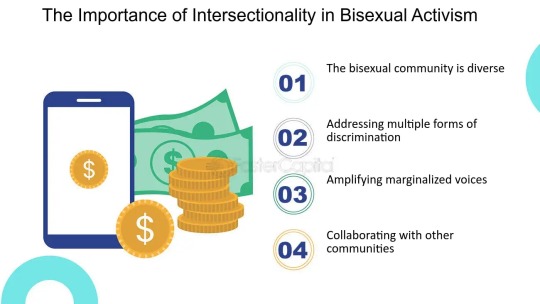
6.Strategies for Bisexual Activism[Original Blog]
Bisexuality is a sexual orientation that is often misunderstood or ignored in mainstream conversations about sexuality. Bisexual people face a unique set of challenges that are distinct from those faced by people who identify as gay or lesbian. One of the biggest challenges faced by bisexual people is a lack of awareness and understanding about bisexuality within the wider community. This makes it difficult for people to come out as bisexual, and can also lead to discrimination and prejudice. In order to combat this, bisexual activism is essential. Activism can take many different forms, but one of the most important strategies for bisexual activism is increasing awareness and education. In this section, we will explore some of the key strategies for increasing awareness and education about bisexuality.
1. Start with the Basics: One of the most important things that can be done to increase awareness and education about bisexuality is to start with the basics. This means defining what bisexuality is, and how it differs from other sexual orientations. Bisexuality is often misunderstood as a phase, or as a waystation on the road to homosexuality or heterosexuality. Educating people about the reality of bisexuality, and the fact that it is a valid and legitimate sexual orientation in its own right, is essential. This can be done through workshops, seminars, or online resources.
2. Use social media: Social media is an incredibly powerful tool for increasing awareness and education about bisexuality. By using platforms like Twitter, Facebook, and Instagram, bisexual activists can connect with a wider audience and spread their message to people who might not otherwise come into contact with it. Social media can be used to share personal stories, educational resources, and news about upcoming events.
3. Partner with LGBTQ+ Organizations: Bisexual activists should also consider partnering with other LGBTQ+ organizations to increase awareness and education about bisexuality. This can involve collaborating on events, sharing resources, and working together to create a more inclusive community. By partnering with other organizations, bisexual activists can help to create a more powerful and unified voice for the LGBTQ+ community as a whole.
4. Create Safe Spaces: Creating safe spaces for bisexual people is another important strategy for increasing awareness and education about bisexuality. Safe spaces can be physical spaces, like community centers or support groups, or they can be virtual spaces, like online forums or chat rooms. By creating safe spaces where bisexual people can share their experiences and receive support, bisexual activists can help to combat the isolation and stigma that many bisexual people face.
5. Celebrate Bisexuality: Finally, bisexual activists should celebrate bisexuality and the contributions that bisexual people make to society. This can involve organizing events like Bisexual Awareness Week, or creating art and other forms of media that celebrate bisexuality. By celebrating bisexuality, bisexual activists can help to create a more positive and inclusive image of bisexuality in the wider community.
Increasing awareness and education about bisexuality is essential for combatting discrimination and prejudice against bisexual people. By using a combination of strategies like starting with the basics, using social media, partnering with LGBTQ+ organizations, creating safe spaces, and celebrating bisexuality, bisexual activists can help to create a more inclusive and accepting world for all people.
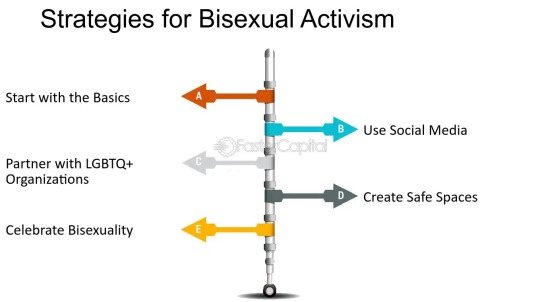
7.The Stonewall Riots and Bisexual Activism[Original Blog]
The Stonewall Riots played a pivotal role in the gay rights movement, but the involvement of bisexual activists in the riots and subsequent activism is often overlooked. Bisexual people were present and actively participating in the Stonewall Riots, and their contributions deserve recognition. While the riots were sparked by the police raid of a gay bar, the Stonewall Inn, located in New York City's Greenwich Village neighborhood on June 28, 1969, the fight for equality extended beyond the gay community. Bisexual individuals also faced discrimination and harassment, and many of them actively fought for their rights alongside their gay and lesbian peers.
To understand the role of bisexual activism in the Stonewall Riots and beyond, it's important to explore the experiences and perspectives of those involved. Here are some key insights and details to consider:
1. Bisexual individuals played a significant role in the Stonewall Riots, and their activism helped pave the way for greater visibility and acceptance of bisexuality. For example, Brenda Howard, a bisexual woman, is often referred to as the "Mother of Pride" for her role in organizing the first LGBTQ+ Pride March in New York City in 1970, which commemorated the one-year anniversary of the Stonewall Riots.
2. Despite their contributions, bisexual activists faced erasure and marginalization within the gay rights movement. Many gay and lesbian activists viewed bisexuality as a phase, a form of confusion, or a betrayal of the movement. This attitude led to bisexual people being excluded from leadership roles, denied access to resources, and subjected to biphobic attitudes and behaviors.
3. Bisexual activists responded to this exclusion by forming their own organizations and events, such as the BiPOL (Bisexual Politicians of America) conference in 1990. These efforts aimed to create spaces where bisexual people could connect with each other, share their experiences, and advocate for their rights.
4. The Stonewall Riots and subsequent activism helped pave the way for greater acceptance of bisexuality, but there is still much work to be done. Bisexual individuals still face high levels of discrimination, both within and outside of the LGBTQ+ community. For example, bisexual people are more likely to experience poverty, mental health issues, and sexual violence than their gay and lesbian peers. Additionally, bisexual people are often subjected to stereotypes and myths about their sexuality, such as the idea that they are promiscuous or unable to commit to a monogamous relationship.
5. To honor the legacy of bisexual activists and continue the fight for bisexual rights, it's important to listen to and amplify bisexual voices. This means creating inclusive spaces where bisexual people can share their stories, advocating for policies that address bisexual-specific issues, and challenging biphobic attitudes and behaviors whenever they arise. By working together, we can continue to build a more equitable and just world for all LGBTQ+ people.

#bisexual education#queer education#bisexual activism#bisexual activist#bisexual#bi history#bisexual history#bisexuality#lgbtq community#lgbtq#bi#support bisexuality#pride#bi tumblr#bisexuality is valid#lgbtq pride#bi pride#bisexual nation#bi men#bi women#bi people#bisexual men#bisexual women#bisexual people#the stonewall riots#stonewall#bi activist#bi activism#bi+#bi+ community
7 notes
·
View notes
Text
Bisexual erasure. “When bisexuality is ignored, discriminated against, demonized, or rendered invisible by both the heterosexual world and the lesbian and gay communities. Often, the entire sexual orientation is branded as invalid, immoral, or irrelevant.”
what does it Look like?
- Assuming that two women together are lesbians, two men together are gay, or a man and a woman together are straight
- In most scientific studies, bisexuality is lumped in under “gay” or “lesbian” identities
- Many LGBTQ+ organizations don’t offer programming for bisexuals
- Questioning someone’s bisexuality if they haven’t had sex with both men and women.
what does it sound like?
- “I’m not interested in dating you because you’ve only dated men.” (Implying that I’m actually straight)
- “Bi women are more likely to leave you for a straight relationship.”
- “He’s only ever dated men, so he’s obviously gay.”
- “There’s no point in coming out as Bi if you never plan to leave your current relationship. You just want attention.”
what are the consequences?
- Bi erasure leads to bi phobia (discrimination, anger, blame, and hypersexualization).
- Bi people have *significantly* higher health risks than any other sexual identity group, including alarmingly high rates of depression and suicide.
- Bi women experience much higher rates of domestic violence.
- In the ‘80s and ‘90s bi people were blamed for spreading HIV. and we are still blamed for the spread of other STI’s.
what can I do?
- If you want to help, here’s what you can do:
- Check your own biases When someone says something shitty about bisexuality, correct them—even if a bisexual person isn’t present
- Ask your local LGBTQ+ orgs to offer bi/Pan programs
- Donate time or money to bi-specific organizations.
- Resources: Bisexual Resource Center (BiResource.org) Bi Plus Organizing US (@BiPlusOrgUS) Bi Pride UK (BiPrideUK.org) BiPhoria! (biphoria.org.uk) American Institute of Bisexuality (bisexuality.org) “Greedy: Notes from a Bisexual Who Wants Too Much” by Jen Winston “Look Both Ways: Bisexual Politics” by Jennifer Baumgardner “Hunger: A Memoir of (My) Body” by Roxane Gay
#bi erasure#bisexual erasure#end biphobia#biphobia#biphobic gay people#biphobic#bisexuality#lgbtq community#lgbtq#bi#support bisexuality#pride#bi tumblr#bisexuality is valid#lgbtq pride#bi pride#bisexual#bisexual community#bi community#bi men#bi women#bisexual people#bi people#bisexual education#bisexual nation#queer nation#queer
95 notes
·
View notes
Text

In this post...
Today is Bisexual Visibility Day, a day that celebrates the B in LGBT+, and gets content writers like me asking and answering important questions like; ‘what is bi visibility?’, ‘how to celebrate bi visibility day’, and ‘why do we have a day dedicated to bisexuality?’.
In this blog we’ll help with all your questions. We’ll dispell common myths and misconceptions about the bisexual community, and delve into why we need to stop the erasure of bisexual people. We’ll also offer guidance on how we can go about supporting and celebrating our bisexual friends, peers and colleagues.
Misconceptions about bisexuality
First of all, let’s dispel some harmful myths about the bisexual community:
Bisexual people are greedy/non-monogamous
Why people say this:
The idea that bisexual people are greedy or polyamorous relates to the thought that an attraction to more than one gender means a desire to form intimate relationships with everyone. It’s possible that this is linked to the equally harmful misconceptions around the promiscuity of the LGBTQ+ community.
Why it’s harmful:
The main reason this is harmful is because it intrinsically links an individual’s sexual orientation to their sexual activity. If a straight person told you they were straight, it is unlikely that your initial thought following that would include the number of people they sleep with.
When people hold these views of bisexual people, it creates an image of the person that is not necessarily aligned to who that person is. In a work context this can create discomfort, is inappropriate to assume/verbalise, and can lead to bisexual people avoiding conversations that relate to their sexual orientation.
Bisexual people can’t make their mind up
Why people say this:
The harmful perception here is that people are either homosexual or heterosexual, and that bisexual identifying people are just deciding which category they fall into. It dismisses bisexuality as a legitimate sexual identity.
Why it’s harmful:
For anyone that isn’t heterosexual, typically your life before coming out (and often much after), is surrounded by reminders about why your sexual orientation strays from the norm. LGBTQ+ people are often made to hide their sexual orientation, or are deterred from exploring and understanding their sexual identity.
Getting to know yourself, and feeling confident in sharing your sexual orientation with others is therefore a significant life event for many LGBTQ+ people. Bisexual people in particular are often made to feel as if their identity is invalid, not real, or still worth questioning, especially when asked to ‘decide’ or ‘pick’ an orientation.
It must be worse for lesbian/gay men
Why people say this:
Ever since the LGBT acronym and movement for equality formed, there has been discussions around how to equally represent the interests of each community represented by the iconic rainbow flag. Conversations on lesbian rights and gay rights have dominated popular culture, and often for very legitimate reasons. However, this means that a lot of the progress that has been made has been for the benefit of these communities, and not all LGBTQ+ people.
Why it’s harmful:
Bisexual people are more likely to experience mental health challenges than lesbian and gay people. Bisexual people are more likely to attempt suicide, to be impacted by substance abuse, and to experience domestic violence. Clearly, bi-invisibility prevents us from seeing, at multiple levels, very serious issues impacting bisexual people.
The pros of removing bi-invisibility and supporting our bi colleagues
Bi-invisibility or bi-erasure, is when we ignore or re-explain the existence of bisexuality. Take for example a colleague who you met whilst in a same sex relationship, who then leaves that relationship and begins a heteronormative relationship. Comments such as ‘I think they were gay, but they must be straight now’, would be an example of bi-erasure.
Hopefully from the above myth busting you can see why that might be harmful, so, what can you do to be more supportive, and challenge bi-erasure when it happens?
How to support bisexual colleagues at work
We’ve now reached the nitty gritty of the blog, the ‘How to’ apply the learnings from above. What do individuals and organisations need to achieve so that we can ensure that all bisexual employees are able to exist and thrive openly in work without fear of discrimination, bias, and harassment:
Individuals
Stop being so urgent to label people
Our human desire to understand the world around us often forces our minds to categorise things quickly, including someone’s sexual orientation. So if someone refers to a same sex relationship, we assume that they are likely homosexual. If you can acknowledge that there is a whole spectrum of sexuality that people sit within, we can help our bisexual colleagues by preventing them having to continuously correct people, or keep coming out.
Ask inclusive questions
‘What’s your boyfriend’s name?’ assumes the sexuality of the person you’re engaging with, and the gender of their partner. Try asking more inclusive questions such as ‘what’s your partner’s name?’. Alternatively, wait for the person to give a name and gender, and reflect that back to them.
If you’re not sure, ask! A lot of the time people are afraid of asking because they’re worried they’ll cause offence.
Think about that for a second. Being bisexual, or homosexual is not a bad thing. Asking about someone’s sexual orientation politely, in a safe environment, and with good intent isn’t inherently a bad thing.
Apologise and move on
This one’s simple. If you make a mistake, apologise and move on with the conversation. Dwelling, and asking additional and intrusive questions is inappropriate and can make your colleagues feel uncomfortable.
Ask Google!
If you have questions on bisexuality, go to google before you bring them up with your bisexual colleagues. Chances are you’ll find an answer. If you’re looking to understand your colleagues’ experience based on what you’ve taken the time to learn about privately, make sure that they’re comfortable having the conversation before asking.
Organisations
Empower your bi employees to focus on their jobs, not consistently coming out
When you consistently question, deny or incorrectly define the sexual orientation of someone who is bisexual they then need to spend time correcting that. This process of constantly coming out can be exhausting for bisexual people. All of this worry, concern, action, and time, is time that could be spent on other more productive activities.
Save time by getting your policies and processes right first time
To be truly inclusive, don’t assume that an LGBT+ policy, LGBT+ network, or any related initiatives are inclusive of all LGBT+ needs. Consult with bisexual employees, or specialists to understand where gaps might be in your planning. 7% of gay men are not out at work, compared to 49% of bisexual men, and 4% of lesbians compared to 34% of bisexual women. This indicates that on a whole, we have more to do to help bisexual employees feel safe in the decision to be open about their identity. Doing it right the first time means you don’t have to invest further into reviewing and changing your policies in hindsight.
Ensure there’s a safe space by promoting education & visibility
At a company wide level, make issues impacting bisexual employees known through training and education programmes. By spreading awareness, you can create safe spaces by increasing allyship. At a network level, ensure that your networks have bi-visibility at the forefront by having representatives within your network structure.
Give bisexual employees the means to speak up about harassment
Encourage bisexual staff to speak up if they encounter discrimination or harassment. Give them the tools to understand their experiences, by providing useful support systems and information points. Speak up about your reporting pathways.
Offer a variety of ways for people to report to ensure that regardless of the individual’s circumstances, they can find a way to report safely and confidently. For this to be effective, your processes need to be airtight too.
#bisexuality#lgbtq community#lgbtq#bi#support bisexuality#pride#bi tumblr#bisexuality is valid#lgbtq pride#bi pride#bisexual#bi men#bi women#bi people#bisexual men#bisexual women#bisexual people#bisexual work#bisexual workplace#workplace#work#queer nation#bisexual nation#bi visibility#bisexual visibility#bisexual community#bi community
7 notes
·
View notes
Text


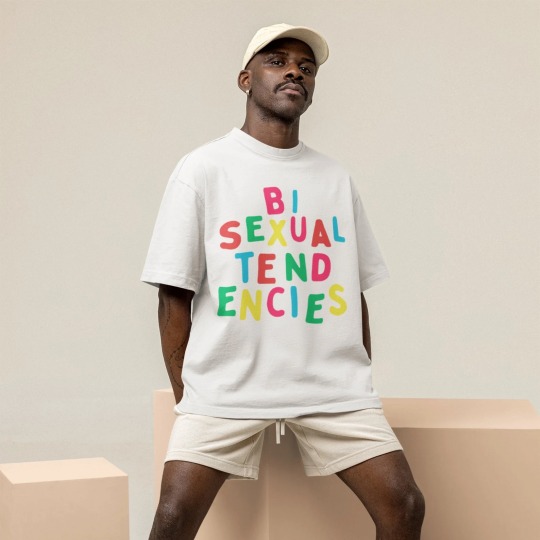
BISEXUAL TENDENCIES SHIRT, Bisexual Tshirt, Funny Bi Shirt, Colorful Lgbtq Pride Shirts, Bi Coming Out Gift
Bisexual Tendencies Shirt - Looking for a fun bi pride shirt? Be loud and proud in this bisexual tendencies tshirt. A great gift for the bi in your life.
Check out my other listings for many other LGBTQ+ shirts.
SIZING
Please size up for the over-sized look, refer to the size chart in the final image for the perfect fit.
MATERIALS
Comfort Colors are the ultimate when it comes to soft and comfortable Tshirts. They are made from 100% ring-spun cotton. The soft-washed, garment-dyed fabric brings extra coziness to your wardrobe while the relaxed fit makes it an excellent daily choice. They are highly durable, have no side seem and hold their shape.
CANCELLATIONS / RETURNS POLICY
Because this item is made to order, I am unable to do cancellations or refunds, but if you have a problem with your purchase, please contact me with a photo of your issue and I will sort a replacement asap.
CARE INSTRUCTIONS
Wash inside out, and on a delicate cycle.
Lay flat to dry
Do not bleach
Do not iron directly onto the design
Do not dry clean.
You will be buying from a queer owned shop 🌈
Thank you so much for stopping by.
#bisexuality#lgbtq community#lgbtq#bi#support bisexuality#pride#bi tumblr#bisexuality is valid#lgbtq pride#bi pride#esty#bisexual#bisexual merchandise#bisexual merch#bi merchandise#bi merch#bisexual tendencies#queer nation#bisexual nation#queer#bi curious#bi culture#bicuriosity
21 notes
·
View notes
Text

Compulsory Heterosexuality
You might’ve heard the term “comphet” on socials lately. It’s the cute, shortened term for Compulsory Heterosexuality. What is Compulsory Heterosexuality? Adrienne Rich wrote about the concept in her essay “Compulsory Heterosexuality and Lesbian Existence,” published in 1980. In the essay, Rich argued that heterosexuality is not natural, but instead an institution imposed on women to keep them subordinate and subservient to men in society. Comphet basically assumes that heterosexuality is the default sexual orientation of all people. Rich wrote this essay as a way of challenging the erasure of lesbianism from scholarly and feminist literature, and it’s now making a major resurgence in LGBTQ+ discourse (THANK YOU!).
More and more Queer people are realizing that comphet is actually hella applicable to their sexuality and situation. Many of us didn’t grow up with queer representation in the media, and only straight relationships were encouraged and promoted around us. Dolls were for girls, and toy trucks were for boys. “That’s just the way it is,” still echoes in our brains. Nothing was telling us that it was ok to be queer and nothing gave us permission to act on what we felt inside of us.
A narrative has been constructed in pop culture about bisexuality where it has been looked at as a joke, a “stop on the way to gay-town,” or simply a fake term used for people who can’t make up their minds. All of this also plays into the idea of comphet. Bisexual people are told that their attractions aren’t real, so many of us default to identifying as straight, then end up eventually (hopefully) coming to terms with our sexuality a bit later in life.
Bi-Imposter Syndrome
A lot of bisexuals face an internal battle because of our attraction to different genders. It’s like we have Imposter Syndrome, but the bi kind. This is when we doubt ourselves, doubt our attractions, and feel influenced by the messages we hear about bisexuality that are out in the world. When we hear negative messaging about bisexuality, it can really impact how we view ourselves! Even if it’s just a joke or an innocent stereotype (like cuffing our jeans). We can still feel like if we don’t do certain things, or act a certain way, that we aren’t actually bi.
Having a lack of representation can also make us doubt ourselves and lose trust in what our gut is saying. The media we consume, and the narratives within that content, can impact how we come to accept our sexuality — particularly when the bisexual identity is a joke or “not real.” It’s like being gaslighted by the media. We’re told that we’re just at the pitstop before we “become gay,” or we’re just “acting bi” to be shocking. Ugh.
Coming Out
Bisexuals don’t always come out. Sometimes it feels like we’re living a life shrouded in mystery. Bisexuals (particularly bisexual men) don’t come out to their family or partners because they fear they’ll be ostracized by their loved ones. If this sounds familiar to you, you’re not alone!
A lot of bisexuals in straight-passing relationships are hesitant to come out. (Hiiii!) There can be a sense that you’re not “bi-enough” that can harbour hesitation about coming out because you’ve never had a partner, or experience, with someone of your gender. Maybe you’ve been with your partner of the opposite gender for years and don’t want to come out to avoid questions or criticism. That’s totally fair! You do what’s best for YOU!
If you do decide to come out, there are so many ways that you can choose to do it. It can feel like a weight off of your shoulders, but it can also feel like you’re intruding into a space that’s not totally welcoming to your sexuality.
Biphobia
Biphobia is the belief that bisexuality is lesser than, or not-as-real as, other sexualities. People can view bisexuality as unnatural, a choice, and something to be ashamed of or looked down upon. It’s often not taken as seriously as other sexuality-based phobias, but biphobia can be just as impactful as homophobia, transphobia, or any other form of discrimination against someone in the LGBTQ+ community.
Studies have shown that bisexual people don’t come out to the people in their lives as much as lesbian and gay people do. We can hold a lot of confusion about our identity and sexuality, and there can be a lot of negative messaging around bisexuality that leads to the development of mental health struggles like anxiety, depression, and more.
Internalized Biphobia
Ok, so we talked about feeling bi-imposter syndrome. But now we’re going to talk about something that many of us don’t want to confront — internalized bi-phobia. Yes, you can be biased and phobic against yourself…and it feels awful. Like we said, as bisexuals we tend to question our sexuality more than our queer counterparts.
This is particularly prevalent in men. Men don’t have a lot of bi-representation, so many are left battling their sexuality from a perspective of legitimacy and acceptance. Are they bi? Are they gay? It seems to be more culturally acceptable for women to be bisexual, so men are sometimes left wondering if it’s even possible for them to be bi. We’re here to tell you — it is absolutely possible! It’s also possible for a trans person who defies the gender binary to be bisexual. It’s all about connecting with a label that feels right for you!
Often as bisexual people are discovering their sexuality, there’s a growing confusion about the emotions and attractions they feel. This can lead to self-esteem issues, self-hatred and other mental health issues. And these issues aren’t helped when the messaging from your family and friends isn’t supportive and loving.
From Friends and Family
Many bisexual people choose to keep their sexuality under wraps and never reallyyyy come out. You might tell some trusted people in your life, but many bisexuals aren’t known for making an announcement or a coming-out post on the ‘gram. This is because we don’t feel like facing any criticism, scepticism, or backlash from our closest friends and family.
Family and friends often overlook the attraction to people of the same gender and see bisexuality as a curiosity or a choice. Some people experience their family and friends avoiding the topic of their sexuality, or asking about relationships only with people of the opposite gender.
We just wish that our parents would support us and that our friends would accept us with no questions asked. When that doesn’t happen, it stings, it hurts — and holy crap does it suuuuck! But we see you and we’ll always be here for you! No coming out post needed!
In the LGBTQ Community
Bisexual people search for a welcome space in the queer community but are sometimes met with hostility. Bisexual men are assumed to not be ready to claim the title of being gay, and bi women are looked at as “just experimenting.” But both men and women are shamed for being in straight-passing relationships. Even though we’re part of the acronym, many bi people still feel like they’re the invisible “B” in the LGBTQ+ community.
A study in 2016 found that biphobia persists in all communities. Research has found that bisexual people are marginalized by both heterosexual people and those in the LGBTQ+ community. Oof! Some Queer people see a bi-person in a straight-passing relationship as less queer, and less legitimate, than if they were in a relationship with someone of the same sex.
The Need for BiCons (Bi-Icons) in Pop Culture
There are many stereotypes about bisexual people that are perpetuated by society. We can be seen as sexually promiscuous, rebels against lesbian and gay communities, and attention-seeking dramatics. And bisexuals are often criticized (and then fetishized) by straight men who see bisexual women as an opportunity for a threesome — as though a woman’s bisexuality is actually a way to play into the male gaze.
Bisexual men are judged by society because they are seen as only just beginning their journey to homosexuality. The male bi-identity is so overlooked, forgotten and looked down upon because of the toxic masculinity that is so prevalent in all aspects of our culture. Unfortunately, so many prominent male bisexuals have been categorized as gay — like Freddie Mercury. So, bisexual men don’t have many role models in pop culture to look up to for encouragement and direction.
The internal struggle of bisexual people could be made so much easierrrrr if pop culture and media would portray bisexuality in positive and complex ways.
Bisexuality Affirmation
If you’re struggling to accept your bisexuality, you’re not alone. Like we said, so many bisexual people struggle to accept their sexuality because of confusion, cultural messaging, internalized biphobia, and biphobia from other communities.
Accepting Your Bisexuality
If you’re still questioning then think about this…straight people don’t spend all of their time wondering if they’re straight. They don’t worry about how their relationships are perceived. So if you’re worrying about if you’re bi enough, let us be the first to tell you that YOU ARE. You’re 100% bi-enough. 100% queer enough. And you’re worthy of accepting yourself regardless of your dating history, or what anyone else might tell you.
You are worthy of owning the bisexual label if that’s what feels right to you. Bisexuality doesn’t have to mean that you’re only attracted to two genders either. You can be bi and still attracted to everyone within, and beyond, the gender spectrum. And, bisexuality is not limited to just men or women…you can be agender, non-binary, gender non-conforming, gender fluid, or any other gender expression! If the label of bisexual feels right, then that’s what matters most of all.
It can be hard to start owning and accepting your bisexuality. Saying it out loud for the first time can be a bit scary! (And if saying it out loud 10 more times is still a little scary, that’s ok too.) So take it slow at first. Only do what’s comfortable for you at this point in time.
Connecting With Others
If you want to go a step further, reach out and talk to other people in the queer community that might be open to acting as a guide as you start down the path of acceptance. And follow other bisexual people on social media! The more bisexuals you follow, the more you’ll realize that our stories are all very similar in nature. Reading their stories and seeing their journeys can help you come to accept your own.
If you want to start connecting with other queer people, check out Taimi! Taimi is the world’s largest online LGBTQ+ platform (with over 10 million users — and millions identifying as bisexual+ spectrum), featuring a social network, dating app and streaming all wrapped in one! It’s a safe and secure space to look for long-term romance, make friends, network, or just talk to someone for fun! The best part is that they’re open to everyone regardless of where they identify on the gender and sexuality spectrum. Plus, they post blog articles like this Drag Race review, this list of binge-worthy LGBTQ+ TV shows and this Dark Side of Valentine’s Day post. Taimi’s goal is to create an LGBTQ+ community where diversity, inclusion and love are the core values. Honestly, who wouldn’t want to be part of that?!
Learning More
There are also a number of books that you can begin reading to help you learn more about bisexuality and what it might look like for you! Here are some of our favourites:
– Bi America: Myths, Truths, And Struggles Of An Invisible Community by William Burleson
– The Bisexual’s Guide to the Universe: Quips, Tips, And Lists for Those Who Go Both Ways by Nicole Kristal and Mike Szymanski
– Bi Lives: Bisexual Women Tell Their Stories by Kata Orndorff
– Bi Men Coming Out Every Which Way edited by Pete Chvnay and Ron Jackson Suresha
– Bi Any Other Name: Bisexual People Speak Out by Loraine Hutchins and Lani Kaahumanu
Representation
Bisexual representation is becoming more and more prevalent. Apps like TikTok have bisexual content that’s basically guaranteed to land on the fyp of a questioning bi. For years, the media and entertainment industry has gotten the portrayal of bisexual people reallyyyy wrong. But it seems to be changing for the better!
It’s important to see ourselves in the characters we see on TV, read about in novels, and hear about in songs. It reminds us (and everyone else) that we’re normal! We exist! It gives us hope and encouragement that one day, we won’t have to defend our sexuality to anyone and that we can work towards acceptance.
We hope that this article was helpful! We know how difficult it can be to fully accept and love your bi-identity.
Your sexuality is valid.
You are worthy.
You’re deserving of love.
#bisexuality#lgbtq community#lgbtq#bi#support bisexuality#pride#bi tumblr#bisexuality is valid#lgbtq pride#bi pride#bi community#bisexual community#internalized biphobia#biphobia#biphobic#biphobic gay people#bi men#bi women#bi people#bisexual men#bisexual women#bisexual people#bisexual nation#bisexual education#coming out bisexual#coming out bi#bisexual info#bisexual facts#queer#bisexual
35 notes
·
View notes
Text
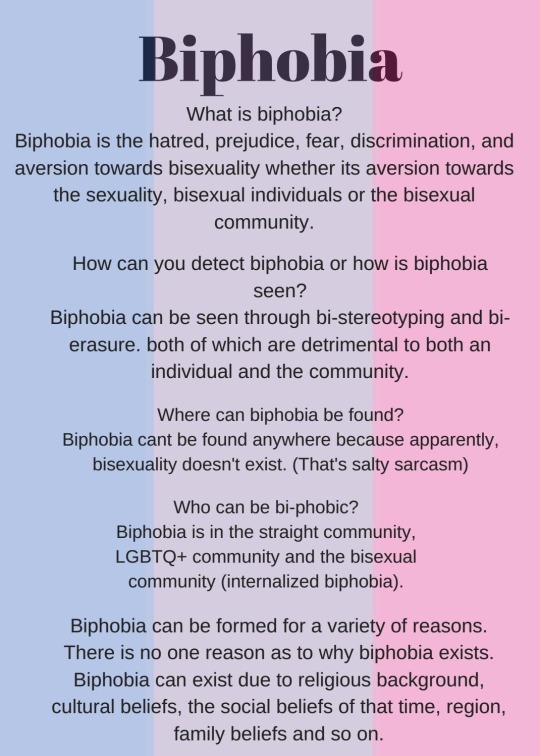

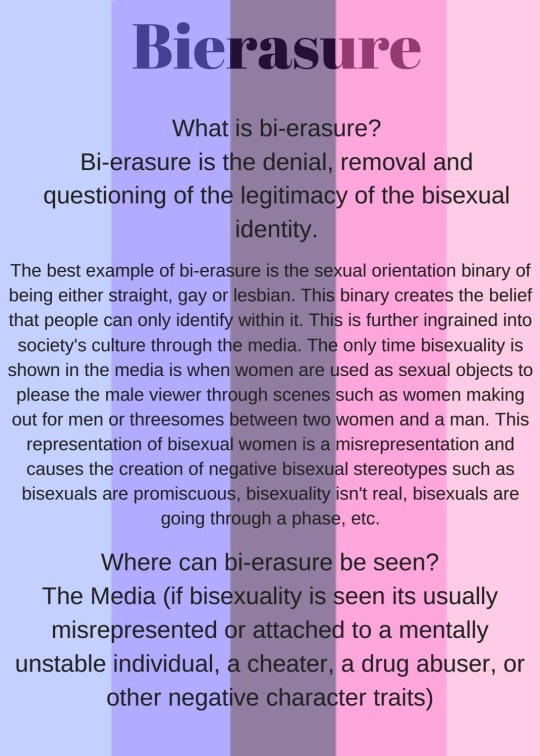




#bisexuality#lgbtq community#lgbtq#bi#support bisexuality#pride#bi tumblr#bisexuality is valid#lgbtq pride#bi pride#end biphobia#biphobic gay people#biphobic#biphobia#internalized biphobia#bi erasure#bisexual erasure#bisexual stereotypes#bi stereotypes#bi men#bisexual nation#bisexual men#bisexual women#bi women#bi people#bisexual people
77 notes
·
View notes
Text
THE DEFINITION OF BISEXUALITY (ACCORDING TO BI ORGANIZATIONS, ACTIVISTS, AND THE COMMUNITY) - TUMBLR MOBILE EDITION
Bisexual Organizations:
http://www.biresource.net/BRC_Brochure_2010.pdf (Bisexual Resource Center: USA)
“The BRC uses bisexual as an umbrella term for people who recognize and honor their potential for sexual and emotional attraction to more than one gender. We celebrate and affirm the diversity of identity and expression regardless of labels.”
http://bisexual.org/am-i-bi/ (American Institute of Bisexuality)
“A bi person has the capacity for romantic and/or sexual attraction to more than one gender.”
http://www.bisexualindex.org.uk/index.php/AmIBisexual (Bisexual Index: UK)
“This is how we define it: A bisexual is someone who is attracted to more than one gender. You might care about the gender of your partner a lot, a little, or not at all - but their gender doesn’t prevent you from being attracted to them.”
http://www.biuk.org/ (Bi UK)
“Bisexuality (or bi) is commonly defined as being attracted to both men and women. However, many members of bisexual communities tend to prefer the definition: ‘a changeable sexual and emotional attraction to people of any sex, where gender may not be a defining factor’: the emphasis here is on being attracted to more than one gender or being attracted to people regardless of gender.” (under the FAQ link)
http://binetusa.blogspot.com/2014/03/binet-usa-bisexual-media-guide.html (BiNet USA)
“Bisexual - A person whose enduring physical, romantic and/or emotional attraction is to other people of various sexes and/or gender identities. Individuals may experience this attraction in differing ways and degrees over their lifetime.”
http://www.torontobinet.org/bi-culture.html (Toronto Bisexual Network)
“Bisexuality is the potential to feel attracted to and to engage in sexual and/or romantic relationships with people of any sex or gender.”
Activists:
http://robynochs.com/quotes/ (Robyn Ochs; Bisexual Activist)
“I call myself bisexual because I acknowledge that I have in myself the potential to be attracted - romantically and/or sexually - to people of more than one sex and/or gender, not necessarily at the same time, not necessarily in the same way, and not necessarily to the same degree.”
Other Organizations:
http://www.hrc.org/resources/entry/glossary-of-terms (Human Rights Campaign)
“Bisexual | A person emotionally, romantically, sexually and relationally attracted to more than one sex and/or gender, though not necessarily simultaneously, in the same way or to the same degree.”
Community on Tumblr:
http://bifacts.tumblr.com/faq
“Bisexuality is the attraction to two or more genders, not necessarily to the same extent, not necessarily in the same way, not necessarily at the same time.”
http://bi-privilege.tumblr.com/idingasbipolyorpan
“bisexuality is, broadly speaking, the attraction to two or more genders. bisexuality is not inherently or transphobic or exclusive of non binary genders—note that there are both binary and non-binary trans people who identify as bisexual. it is possible for bisexuals to be attracted to be attracted to anywhere from two to an infinite number of genders. many times, bisexuals will define their own sexuality as the attraction to both similar and different genders (which encompasses all genders). however, it is important to remember that bisexuals can be attracted to multiple genders without being attracted to people of their own gender. for example, an agender bi person may be attracted to women, bigender, and genderfluid people, or a bi woman might be attracted to men and agender people…..”
http://bi-privilege.tumblr.com/definitions
“bisexual: the (sexual) attraction to two or more genders. sometimes defined as the attraction to same + different genders; however, this is not true of all bisexuals.”
http://biphobic-bisexual.tumblr.com/faq
“bisexuality is the attraction to two or more genders”
http://bisexuality-is.tumblr.com/faq
“Bisexuals have been defining bisexuality as the attraction to two or more/same and other for decades. This isn’t some made-up tumblr joke. Words change meaning. Prefixes change meanings. We didn’t even give ourselves the term bisexual to begin with, doctors did.”
http://nonmono-perspective.tumblr.com/definitions
“bisexual- sexually attracted to your same/similar gender and other gender(s), OR sexually attracted to 2 or more genders. Some bisexuals feel that they experience different kinds or degrees of attraction to different genders/gender presentations.”
http://pinkpurplebluepride.tumblr.com/faq
“Bi: attracted to two or more genders. Some people will define it as “attracted to similar and different genders,” but this is slightly less inclusive than the above definition. I’m of the mind that “similar and different” evolved to satisfy bi=2 prescriptivists, but they are insatiable and forever gross.”
http://thesunnysideofbeingbi.tumblr.com/basics
“…being bi does not reinforce the gender binary. And some bi people are only attracted to men and women–and that’s ok! However, bi is not defined as the attraction to men and women, or two genders. It can be for an individual, but not for our entire community. That definition is not only false, but harmful. (This is not to imply that bi people can’t be transphobic!)
This also means that you don’t have to be sexually attracted to people to be bi. There are so many different kinds of attraction, and to just focus on bisexuality would be excluding a lot of people (e.g. being biromantic).”
http://bisexuwhale-pride.tumblr.com/faq
“What does bisexual mean?
Attraction to:
1. Two or more genders or
2. More than one gender.”
http://themeaningofbisexuality.tumblr.com/
“Bisexuality is the attraction to two or more genders”
http://soloontherocks.tumblr.com/post/104877455841/nothing-extraordinary-soloontherocks-got-it
“Bisexuality is not half gay and half straight. Bisexuality is not in between gay and straight. Bisexuality is not gay when dating the same gender and straight when dating a different gender. Bisexuality is not gay-ish or straight-ish.
Bisexuality is its own fully independent self-contained complete orientation.”
http://bifaq.tumblr.com/post/124565262825/i-dont-find-bi-means-2-to-be-offensive-and-im
http://julietburgess.tumblr.com/post/17986625411/bisexual-is-not-oppressive-can-we-talk-about
Other things worth the read about the definition of bisexuality:
Bisexual Manifesto from 1990:
http://binetusa.blogspot.com/2014/01/1990-bi-manifesto.html
“We are tired of being analyzed, defined and represented by people other than ourselves, or worse yet, not considered at all. We are frustrated by the imposed isolation and invisibility that comes from being told or expected to choose either a homosexual or heterosexual identity.
Monosexuality is a heterosexist dictate used to oppress homosexuals and to negate the validity of bisexuality.
Bisexuality is a whole, fluid identity. Do not assume that bisexuality is binary or duogamous in nature: that we have “two” sides or that we must be involved simultaneously with both genders to be fulfilled human beings. In fact, don’t assume that there are only two genders. Do not mistake our fluidity for confusion, irresponsibility, or an inability to commit. Do not equate promiscuity, infidelity, or unsafe sexual behavior with bisexuality. Those are human traits that cross all sexual orientations. Nothing should be assumed about anyone’s sexuality, including your own.
We are angered by those who refuse to accept our existence; our issues; our contributions; our alliances; our voice. It is time for the bisexual voice to be heard“
https://lgbt.ucsd.edu/education/biphobia.html
http://conditionallyaccepted.com/2015/07/14/bisexuality-part1/http://everydayfeminism.com/2015/01/bi-vs-pan/
http://www.thisisbiscuit.co.uk/but-bi-means-two-and-others-reason-why-we-should-change-the-conversation/
https://somewhatofsomethingother.wordpress.com/2011/03/27/being-bisexual-means-that-youre-only-attracted-to-two-genders-bi-means-two-two-genders/
http://www.huffingtonpost.com/aj-walkley/the-bad-b-word-a-need-for-bisexual-acceptance_b_1781589.html
http://www.huffingtonpost.com/aj-walkley/bisexual-gender-binary_b_2425081.html
”Defining bisexuality, just like defining any identity label, can be complicated and controversial. My definition of the label “bisexual” is informed by the work of The Bisexual Organizing Project. It includes people who use labels such as “bisexual,” “non-monosexual,” “persexual,” “omnisexual,” “ambisexual,” “pansexual,” “queer” or any other term that people use to identify themselves as individuals who are emotionally, romantically or physically attracted to people of more than one sex, gender or gender identity. I also recognize that not everyone chooses to adopt a label to describe their sexual orientation, and I also include non-labeling people who see themselves as part of a queer, non-monosexual or bisexual community under my definition of “bisexual.”“
Reasons why the prefix/etymology argument is not a very good one against “bi = attraction to 2 or more”
https://en.m.wikipedia.org/wiki/Etymological_fallacy
http://bisexual-dragons.tumblr.com/post/124749476996/i-love-doing-the-october-is-not-the-8th-month-of
http://bifaq.tumblr.com/post/124565262825/i-dont-find-bi-means-2-to-be-offensive-and-im
http://www.thisisbiscuit.co.uk/but-bi-means-two-and-others-reason-why-we-should-change-the-conversation/
https://somewhatofsomethingother.wordpress.com/2011/03/27/being-bisexual-means-that-youre-only-attracted-to-two-genders-bi-means-two-two-genders/
http://bi-privilege.tumblr.com/post/88492965880/but-bi-means-two-fun-fact-did-u-know-we
http://freelgbtqpia.tumblr.com/post/112776160876/how-couldnt-but-bi-means-two-doesnt-it-its-the
http://ideas.ted.com/20-words-that-once-meant-something-very-different/
http://m.huffpost.com/us/entry/4847343
#bisexual visibility#bisexual activism#bisexual#bisexuality#bisexual men#bi#bi men#bisexual people#bi community#bisexual community#bisexual pride#bi pride#bisexual nation#bisexual women#bi women#bisexual advocate#bisexual info#bisexual tips#bi visibility#bisexual icons#bi icons
54 notes
·
View notes
Text
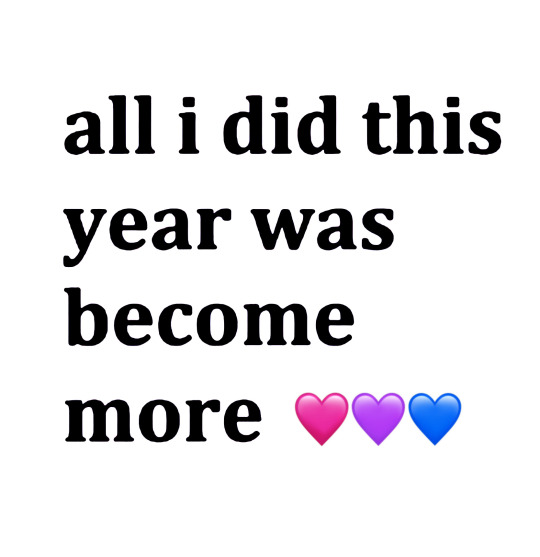
What about you????
#bisexuality#lgbtq community#lgbtq#bi#support bisexuality#pride#bi tumblr#bisexuality is valid#lgbtq pride#bi pride#this year#2023#bisexual#bisexual community#bi community#queer#bisexual nation#bisexual self care#self love matters#self care#self love
151 notes
·
View notes
Text
Bisexual erasure. “When bisexuality is ignored, discriminated against, demonized, or rendered invisible by both the heterosexual world and the lesbian and gay communities. Often, the entire sexual orientation is branded as invalid, immoral, or irrelevant.”
what does it Look like?
- Assuming that two women together are lesbians, two men together are gay, or a man and a woman together are straight
- In most scientific studies, bisexuality is lumped in under “gay” or “lesbian” identities
- Many LGBTQ+ organizations don’t offer programming for bisexuals
- Questioning someone’s bisexuality if they haven’t had sex with both men and women.
what does it sound like?
- “I’m not interested in dating you because you’ve only dated men.” (Implying that I’m actually straight)
- “Bi women are more likely to leave you for a straight relationship.”
- “He’s only ever dated men, so he’s obviously gay.”
- “There’s no point in coming out as Bi if you never plan to leave your current relationship. You just want attention.”
what are the consequences?
- Bi erasure leads to bi phobia (discrimination, anger, blame, and hypersexualization).
- Bi people have *significantly* higher health risks than any other sexual identity group, including alarmingly high rates of depression and suicide.
- Bi women experience much higher rates of domestic violence.
- In the ‘80s and ‘90s bi people were blamed for spreading HIV. and we are still blamed for the spread of other STI’s.
what can I do?
- If you want to help, here’s what you can do:
- Check your own biases When someone says something shitty about bisexuality, correct them—even if a bisexual person isn’t present
- Ask your local LGBTQ+ orgs to offer bi/Pan programs
- Donate time or money to bi-specific organizations.
- Resources: Bisexual Resource Center (BiResource.org) Bi Plus Organizing US (@BiPlusOrgUS) Bi Pride UK (BiPrideUK.org) BiPhoria! (biphoria.org.uk) American Institute of Bisexuality (bisexuality.org) “Greedy: Notes from a Bisexual Who Wants Too Much” by Jen Winston “Look Both Ways: Bisexual Politics” by Jennifer Baumgardner “Hunger: A Memoir of (My) Body” by Roxane Gay
#bisexuality#lgbtq community#lgbtq#bi#support bisexuality#pride#bi tumblr#bisexuality is valid#lgbtq pride#bi pride#bisexual nation#bisexual education#bisexual#bi erasure#bisexual erasure#bi community#bisexual community#bisexual visibility#biphobic#biphobia#biphobic gay people
52 notes
·
View notes